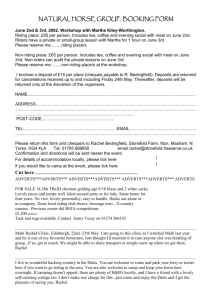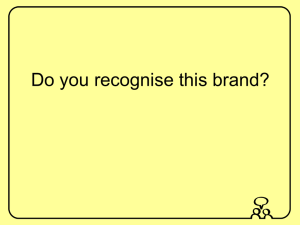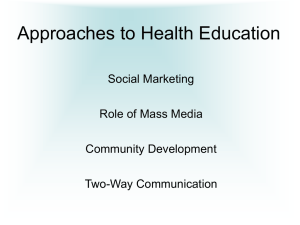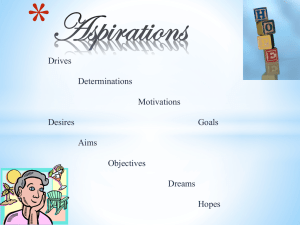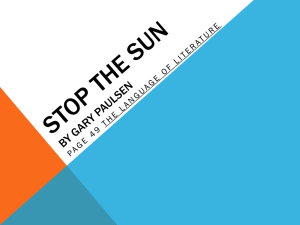memory revision booklet ncr
advertisement
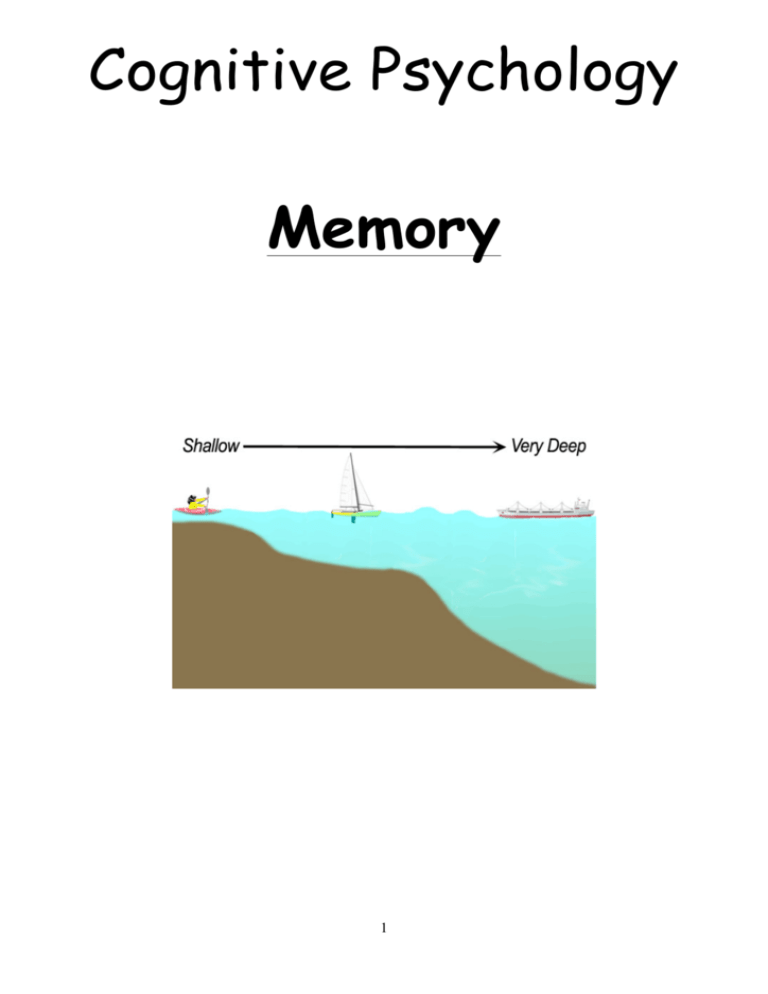
Cognitive Psychology Memory 1 Unit one: Memory Key concepts Candidates should be able to: • describe information processing: input, encoding, storage, retrieval, output; • distinguish between accessibility and availability problems in memory. Core theory: multi-store model of memory Candidates should be able to: • distinguish between sensory store, short-term memory, long-term memory with reference to duration and capacity; • describe the processes of attention and rehearsal; • explain how forgetting occurs through decay and displacement; • explain the criticisms of the multi-store model of memory; Alternative theory: Levels of processing Candidates should be able to: • consider levels of processing theory as an alternative theory, with specific reference to the importance of deep processing in memory. Core study: Terry (2005) Candidates should be able to: • describe Terry’s experiment on the serial position effect in recall of TV commercials; • outline limitations of Terry’s study. Applications of research into memory: memory aids Candidates should be able to: • explain how psychological research relates to memory aids, eg use of cues and retrieval failure, use of imagery and meaning, mind mapping and organisation. Key terms Input The process of data entry Encoding Putting the information into a format that we can store Storage Storing information until its needed Retrieval Getting the information out of storage Output Using data once it has been retrieved Accessibility Problems with information being retrieved Availability Problems with information no longer being stored 2 Core theory: The Multi-Store Model Atkinson and Shiffrin (1968) thought that memory worked as a linear process. They suggested that information comes into our sensory store (sometimes called short term sensory store) through our senses. When it is inputted into out sensory store, the information is encoded. If we pay attention to information then it can proceed to our short term memory (or short term store). Information can only stay here for up to 30 seconds, if we want it to remain for longer, we must rehearse it. It is when information is in this store that we can use it, or output the information. If we have rehearsed information, it can be transferred to the long term memory (or long term store). Here information can be held potentially forever. In order for information to be used, it must be retrieved from the long term memory and put into the short term memory so it can be outputted. The capacity (amount of information ) for STM is 7 +/- 2, for LTM it is potentially unlimited. The duration (length of time) of STM is 20 to 30 seconds, for LTM it is potentially forever. There are two types of forgetting that can occur according to this model. Displacement is when our STM runs out of space. If we try to fit too much information into it, old information is pushed out by the new information. This is an accessibility problem. Decay is when information is not rehearsed enough or not used. This can happen in either the STM or the LTM. This is an availablility problem. Criticisms There are a number of limitations with the multi-store model. L The model cannot explain why we sometimes remember things we have not rehearsed. There are things that we do not want to remember or do not try to remember (so don’t rehearse) that we can still remember years later e.g. tastes. L This theory ignores individual differences – it assumes that everyone’s memory is structured in the same way and cannot explain why some people have a much better memory than others. For example some people have a good memory for certain types of information, whilst others struggle to remember short lists. L This theory is too simplistic, some researchers have suggested there is more than one type of long term memory. It is suggesting that our memory works like a computer process and that our STM is just a box waiting to be filled. 3 Alternative theory: Levels of processing This theory is all about how we process the information that we see. It suggests that we have two levels of processing, deep and shallow. Deep processing is when we think about the meaning of a piece of information. If we understand the meaning or if it has a particular meaning to us, this theory suggests we are more likely to remember it. Shallow processing is when we don’t process the meaning of a piece of information or we don’t understand it. Examples You are going on a trip with your family to the zoo. You drive past a sign giving directions. Your mum would be more likely to process it deeply and remember the directions, as she would be trying to find the zoo so would read the information (deep processing). You may remember the colour of the sign, but not what it said because you were listening to music and trust your mum to get you there (shallow processing). Another example would be if I asked you to remember a list of football results. If you were interested in football you would be more likely to remember the scores as you would have processed them deeply, listening out for where your team was in the league. If you were not interested in football, they would just be a list of numbers with no meaning to you, so you would be less likely to remember them. Core study: Terry (2005) Aim To investigate if our memory is effected by time. Procedure A repeated measures design using university students. Participants had to watch 15 TV adverts (back to back, each advertising a different product). They were then asked to recall the adverts immediately. Terry then gave them a 3 minute written task and asked them to recall the adverts again. Results Terry found the serial position effect. This meant that when participants recalled the adverts straight away, they were good at remembering the adverts from the beginning of the list (the primacy effect) and they were also good at remembering the adverts at the end of the list (recency effect). The adverts in the middle were forgotten. This was because the adverts at the start of the list had been rehearsed and so were in LTM, whilst the adverts at the end of the list were still in STM. Terry found that after the 3 minute written task, the primacy effect was shown, but there was no recency effect. Terry said this was because the adverts at the end of the list were no longer in STM and due to the task had not been rehearsed. 4 Conclusion Memory of the adverts was affected by the position of the advert in the order, not by whether the product meant anything to the participant. This supports the multi-store model of memory because it shows that we have different stores in our memory. Criticisms/Limitations L There is a lack of ecological validity as the experiment does not reflect real life. This is an unrealistic task, normally when adverts are on TV we do not pay them any attention. We are also never normally asked to recall things we have seen in lists. L This experiment lacks construct validity, this means that our memory does a lot more than just remembering adverts. It is only measuring one aspect of our memory. L Demand characteristics may mean that the participants behaved in a unnatural way. They all knew they were being tested or were part of an experiment, this might have made them try harder than usual to remember the adverts, or they could have not bothered to try and mess up the results. Either way, it could mean that Terry’s results are not how people would respond if they were not in an experiment. Applications of research: Memory aids Research into memory and how it works is important, as from it, we can learn how we can improve aspects of our memory. Memory aids are things that we can use in order to improve our ability to remember (recall). Use of cues Sometimes, information is in our memory but we find it hard to access it, cues can help us to find the information. This is why police sometimes reconstruct a crime scene, why retracing your steps can help you remember where you put things you thought you had lost, or why a certain smell might remind you of something. • Colour coding is a cue that can be used to aid memory. Often used by students! • Mnemonics can also be used as cues. This could be organising the first letter of words that need to be remembered to make a rhyme or phrase. Being able to remember the first letters then acts as a cue to remember the original words. E.g. Never Eat Shredded Wheat • Context can also be used as a cue. For example, if you sat your exam in the classroom where we have lessons, you may be more likely to remember things. Or having a lucky pen with you when you revise and using it in the exam. Organisation Mind mapping information helps us to remember it as it allows us to organise the information in to groups. We can also use chunking to help us organise information. E.g when remembering a mobile number, you might chunk the number, so instead of 07856009235, you may chunk it into 0785 600 92 35 Imagery Using images to help us remember means that we encode the information twice, this makes it more likely that we will remember it. Using pictures, for example when teachers print your pictures to learn your names. Method of loci, this is when you take an imaginary tour of your house or a route you know well. You then imagine the things you have to remember in paces along your route e.g. milk by the front door, 5 bread on the bottom stair etc. When you need to remember the things, you just go through the imaginary tour again and think about where you placed everything. } 6 }
